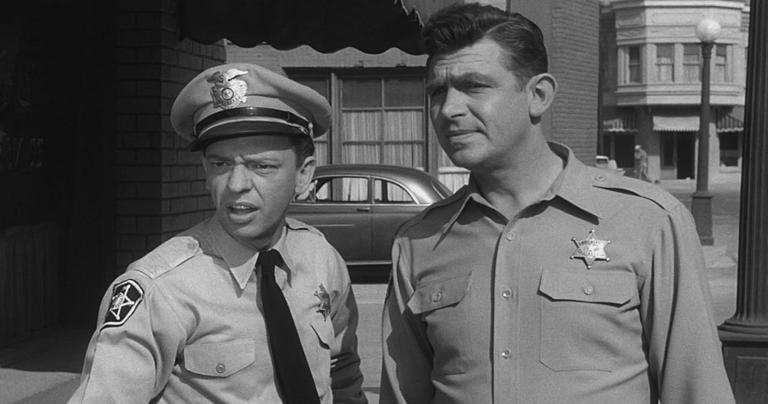
Ron Howard – who played Opie Taylor on The Andy Griffith Show when he was just six years old – recently revealed a fascinating truth behind the iconic scenes that made the legendary series famous. Appearing on the Conan O’Brien Needs a Friend podcast, Howard shared a little-known aspect of the filming process of the show, especially the long, slow, and down-to-earth dialogue segments – a characteristic that has become a “specialty” of The Andy Griffith Show.
The series, which aired for eight seasons from 1960 to 1968, remains one of America’s most beloved television icons. Not only was it notable for its gentle and humane stories, but it was also noted for the slow, natural rhythm in which its characters spoke to each other – something that audiences today still refer to as a unique specialty of the town of Mayberry.
But according to Howard, those slow-burn dialogue scenes actually originated for a very practical reason: to stretch the show’s runtime when it ran short. Howard said the show’s shooting schedule typically took place over three days: Monday, Tuesday, and Wednesday, with script readings on Thursday and rehearsals on Friday. At the end of the shoot, if the episode still didn’t run to the required length (about 26 minutes to fit into the half-hour commercial-free slot), producer Aaron Ruben would come down to the set and talk to Andy Griffith. At that point, Andy would call Don Knotts—who played deputy police officer Barney Fife—by his affectionate nickname, “Jessie,” and say, “Jessie, we’re short. Let’s go!”
And so, at the end of Wednesday’s shoot, the two would quickly come up with a new scene—usually an impromptu conversation between the two leads—and shoot it that night.
This randomness, surprisingly, becomes one of the elements that make the film lively and unique. The seemingly unimportant dialogues – such as discussing something very ordinary, like how to cook a dish or talking about the village – become places to express the attachment between the characters, the slow pace of life and the sense of peace that the audience always finds in Mayberry.
From Howard’s sharing, it can be seen clearly that many of those scenes were built with a certain improvisation and flexibility, but at the same time, there was also a very deliberate way of staging the pacing. Maybe Griffith and Knotts deliberately spoke slowly, creating long pauses between lines to prolong the time. But maybe they were simply chatting like two close friends enjoying the last moment of a long working day, and the camera simply recorded that.
Although the original reason was just to “fill” the missing time of an episode, these scenes accidentally became the soul of The Andy Griffith Show. They brought a rare authenticity to the acting – to the point that the audience no longer felt like they were watching a TV series, but rather like they were witnessing real people, living real lives in a peaceful town, where people truly understood and listened to each other.
That simplicity, the normality in every word, every look and every silence, is what makes The Andy Griffith Show timeless. And thanks to those seemingly “extra” moments, we have a poetic world of Mayberry, where the bond between the actors behind the camera has become beautiful and vivid memories on screen.

